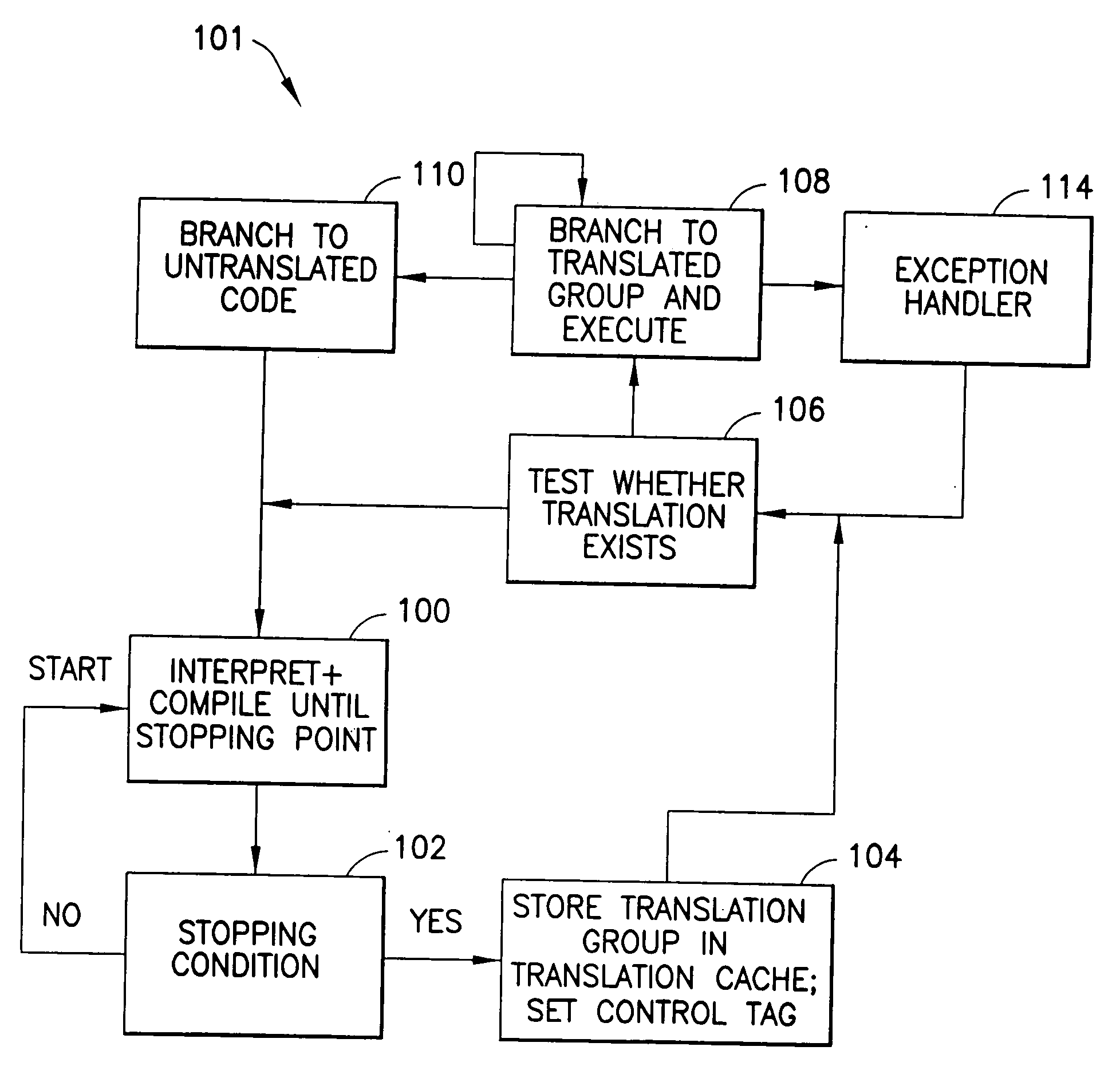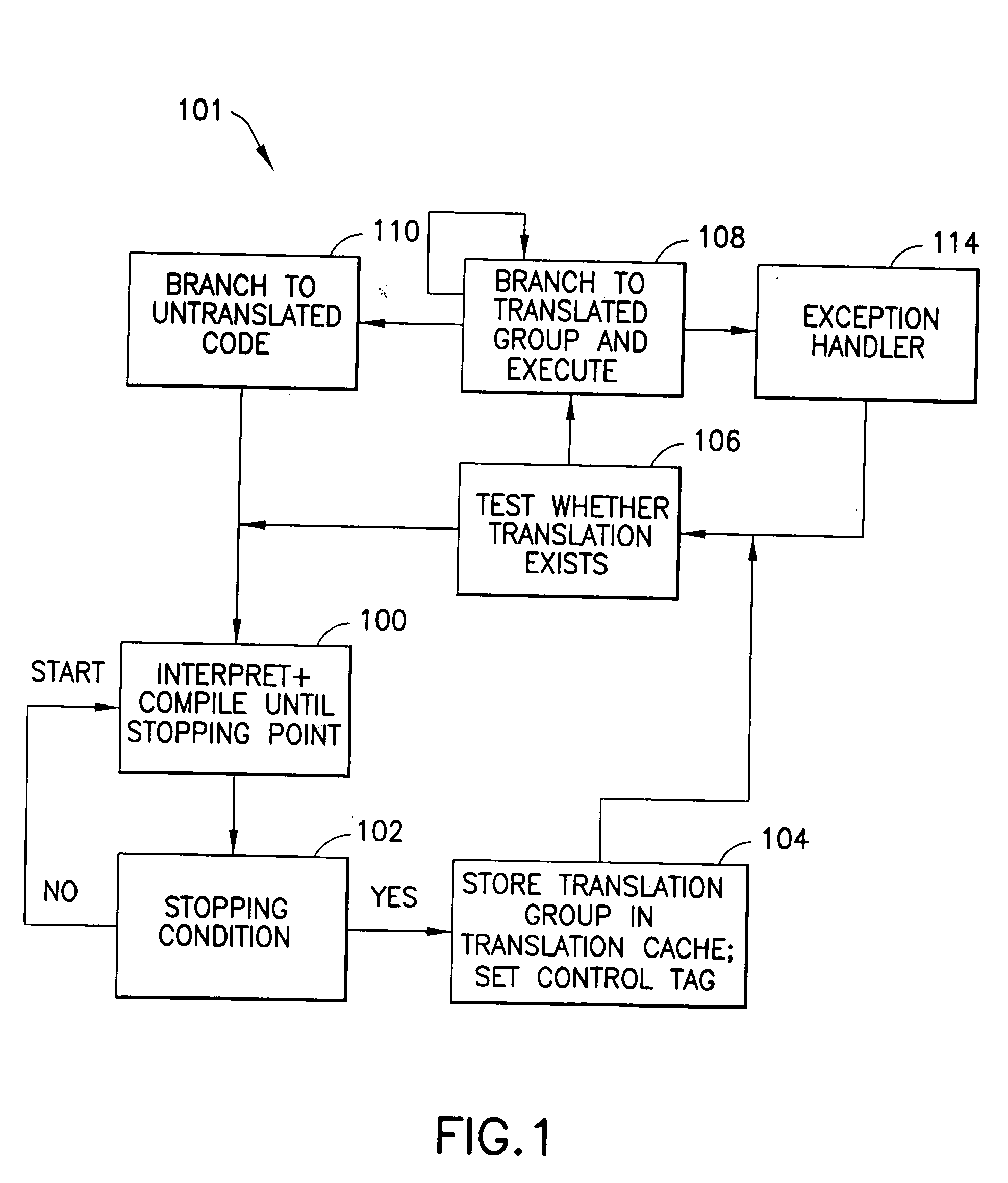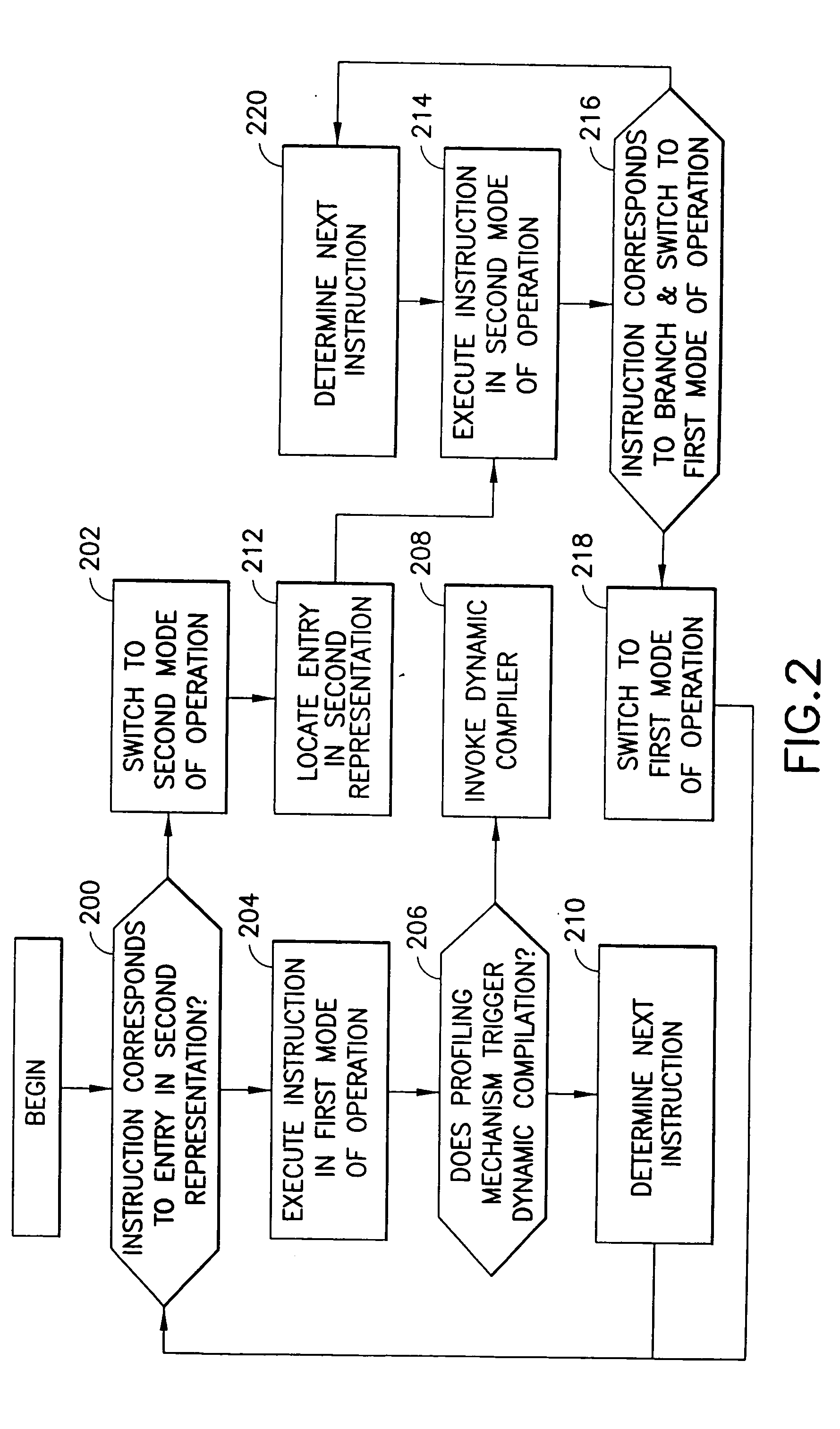Method and apparatus for transferring control in a computer system with dynamic compilation capability
- Summary
- Abstract
- Description
- Claims
- Application Information
AI Technical Summary
Problems solved by technology
Method used
Image
Examples
Embodiment Construction
[0026] The present invention decouples the detection of code transfers (i.e., transfers from a first (migrant) representation to a second (native) representation) from the mapping of code addresses corresponding to the control transfer. By doing so, it is possible to exploit the different characteristics of the transfer decision and the actual transfer step. In particular, it is important that it be possible to determine quickly, for every instruction in the first representation, if a control transfer is possible to an entry point in a second representation of the instruction. This decision has to be performed without incurring any unnecessary overhead in the execution of code from the first program representation. Once a decision to transfer control is made, the address mapping between the current instruction in the first representation and an entry point in the second representation can be effected normally. It should be noted that although conceptually the lookup step is performe...
PUM
 Login to View More
Login to View More Abstract
Description
Claims
Application Information
 Login to View More
Login to View More - R&D
- Intellectual Property
- Life Sciences
- Materials
- Tech Scout
- Unparalleled Data Quality
- Higher Quality Content
- 60% Fewer Hallucinations
Browse by: Latest US Patents, China's latest patents, Technical Efficacy Thesaurus, Application Domain, Technology Topic, Popular Technical Reports.
© 2025 PatSnap. All rights reserved.Legal|Privacy policy|Modern Slavery Act Transparency Statement|Sitemap|About US| Contact US: help@patsnap.com



